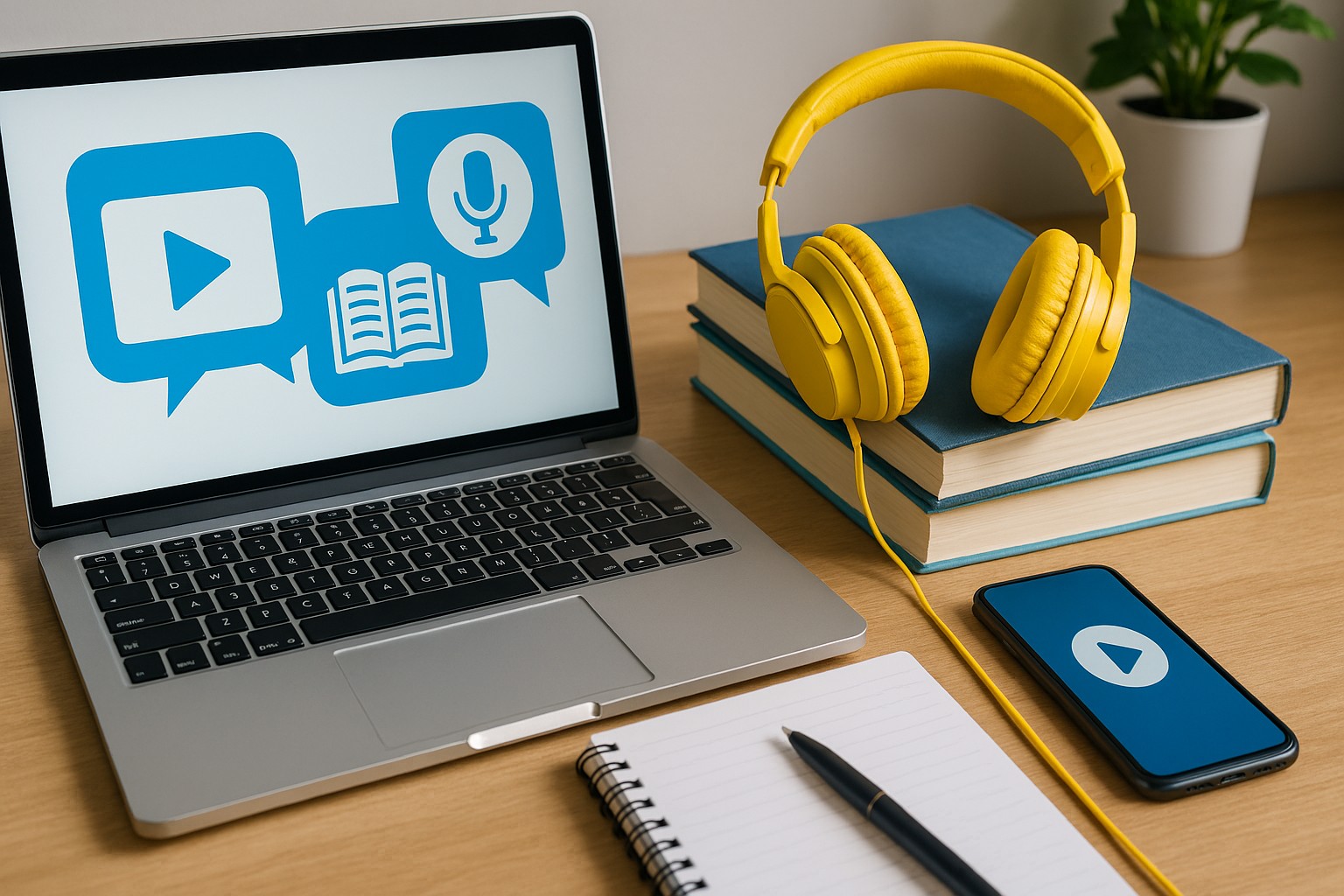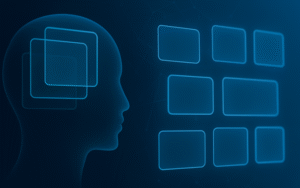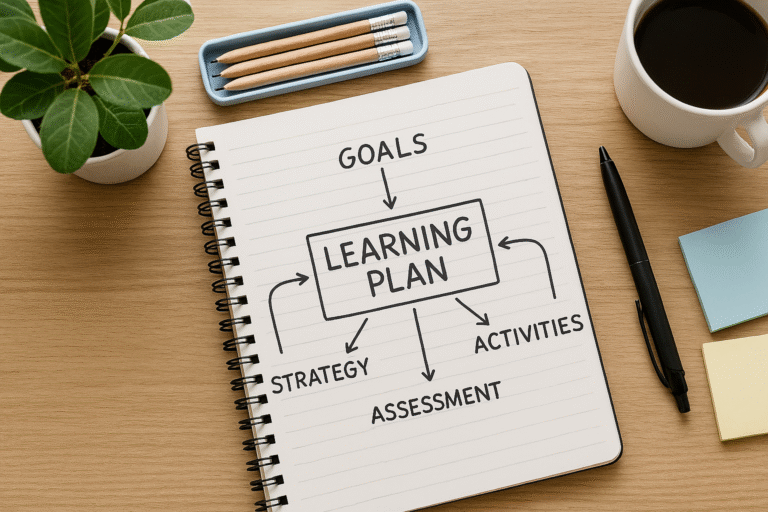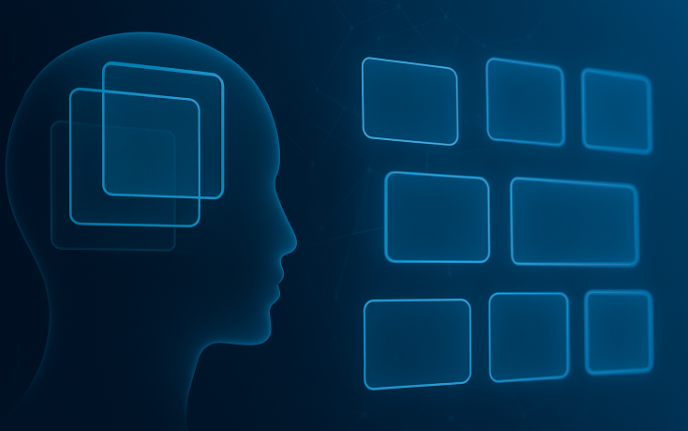
Language learning has undergone a revolutionary transformation in the digital age, with multimedia assisted language learning (MALL) emerging as one of the most effective pedagogical approaches available today. This comprehensive integration of audio, video, interactive content, and emerging technologies like augmented reality creates immersive learning environments that engage multiple senses simultaneously.
MALL represents far more than simply adding videos to traditional classroom instruction. It’s a sophisticated educational methodology that leverages the power of multimedia to enhance comprehension, retention, and practical application of language skills. From interactive subtitled videos to holographic pronunciation practice, MALL is reshaping how educators approach language instruction and how learners acquire new languages.
In this definitive guide, you’ll discover the theoretical foundations of MALL, explore cutting-edge tools and platforms, examine proven benefits backed by research, and understand how to implement these powerful techniques effectively. Whether you’re an educator seeking to enhance your teaching methods or an institution planning to modernize your language programs, this resource will provide the insights you need to succeed.
Understanding Multimedia Assisted Language Learning
What is MALL?
Multimedia Assisted Language Learning is an educational approach that integrates various forms of digital media—including audio, video, graphics, animations, and interactive elements—to facilitate language acquisition and skill development. Unlike traditional Computer-Assisted Language Learning (CALL), which primarily focused on text-based interactions, MALL harnesses the synergy of multiple sensory channels to create rich, engaging learning experiences.
The methodology recognizes that learners process information differently and that combining visual, auditory, and kinesthetic elements can significantly improve learning outcomes. By presenting language content through multiple modalities simultaneously, MALL addresses diverse learning styles while reinforcing key concepts through redundancy and variation.
Historical Evolution and Context
The roots of MALL trace back to the early 1990s when multimedia technology first became accessible for educational purposes. Initial developments focused on combining audio recordings with visual elements, creating the foundation for modern language learning platforms.
The breakthrough came when researchers discovered that students showed dramatically improved comprehension when audio content was paired with visual cues, transcripts, or interactive elements. This finding led to the development of specialized multimedia language learning software and, eventually, the establishment of dedicated academic journals focusing on multimedia-assisted education.
The evolution accelerated with the rise of high-speed internet, mobile devices, and cloud computing. These technological advances enabled the creation of sophisticated platforms that could deliver rich multimedia content anywhere, anytime, making language learning more accessible and flexible than ever before.
Theoretical Foundations
MALL is grounded in several key learning theories that explain why multimedia approaches are particularly effective for language acquisition:
Dual Coding Theory suggests that information processed through both verbal and visual channels is better retained and recalled. When learners simultaneously hear spoken language and see corresponding visuals or text, they create multiple pathways for storing and retrieving information.
Cognitive Load Theory informs how MALL content is designed to optimize mental processing. Well-structured multimedia content reduces extraneous cognitive load while enhancing germane processing, allowing learners to focus on language acquisition rather than navigating complex interfaces.
Social Learning Theory emphasizes the importance of observation and modeling in language acquisition. Video-based MALL content provides authentic models of language use in natural contexts, enabling learners to observe native speakers and cultural nuances firsthand.
Core Categories and Types of MALL
Audio-Based Multimedia Tools
Audio-only tools with accompanying transcripts represent the foundation of MALL applications. These tools typically feature recorded conversations, lectures, or stories paired with searchable text transcripts that learners can follow along with or reference independently.
Modern audio-based MALL platforms often include features like variable playback speed, loop functions for difficult passages, and integrated vocabulary support. Some advanced systems use speech recognition technology to provide pronunciation feedback and allow learners to practice speaking alongside audio content.
The effectiveness of audio-based tools is significantly enhanced when learners have access to transcripts. Research consistently shows that students who can see text while listening demonstrate better comprehension and retention compared to those using audio alone.
Audio-Visual Learning Platforms
The integration of audio and visual elements represents a significant advancement in language learning technology. Captioned video content has emerged as particularly powerful, with studies showing that learners using captioned videos achieve higher listening comprehension scores than those using either video without captions or audio-only materials.
Interactive video platforms take this concept further by allowing learners to click on words for instant definitions, access cultural notes, and replay specific segments. These platforms often feature dual subtitle options, displaying both native language and target language text simultaneously to support learners at different proficiency levels.
Popular platforms in this category include specialized language learning services that curate authentic video content from movies, TV shows, and documentaries, transforming entertainment into educational opportunities. This approach, sometimes called “binge-learning,” capitalizes on learners’ natural enjoyment of media consumption while providing structured language instruction.
Immersive Technology Applications
Augmented Reality (AR) applications represent the cutting edge of MALL technology. AR language learning apps overlay digital information onto the real world, allowing learners to point their mobile devices at objects and instantly access vocabulary, pronunciation guides, and cultural information.
Research on AR applications like ARbis Pictus demonstrates significant improvements in both immediate and delayed recall compared to traditional flashcard methods. The spatial and contextual nature of AR learning creates stronger memory associations and makes vocabulary more memorable.
Virtual Reality (VR) takes immersion even further by placing learners in completely simulated environments where they can practice language skills in realistic scenarios. From virtual conversations in Parisian cafés to business meetings in Tokyo boardrooms, VR provides safe spaces for learners to practice without fear of real-world consequences.
Mobile Learning Integration
Mobile learning has become increasingly important as smartphones and tablets offer unprecedented access to multimedia content. Mobile MALL applications leverage device capabilities like GPS for location-based learning, cameras for AR features, and microphones for speech practice.
The portability of mobile devices enables micro-learning opportunities throughout the day. Learners can practice vocabulary during commutes, review grammar concepts during breaks, or engage with authentic content during leisure time. This distributed practice approach often proves more effective than concentrated study sessions.
Holographic applications for mobile devices represent an emerging frontier in MALL. Early studies of holographic pronunciation practice apps show promising results for both learner motivation and performance improvement, suggesting that this technology may play a significant role in future language education.
Platform Examples and Tools
Interactive Video Platforms
Yabla stands as a premier example of interactive video-based language learning. The platform curates authentic video content from various sources and enhances it with interactive subtitles, vocabulary games, and comprehension exercises. Learners can adjust playback speed, loop difficult sections, and access instant translations without leaving the video interface.
Lingopie represents another innovative approach to video-based language learning, positioning itself as a “binge-learning” platform. By transforming popular TV shows and movies into interactive learning experiences, Lingopie makes language study feel more like entertainment than traditional education. The platform includes micro-tools for vocabulary building and has expanded into specialized applications for children, music, and specific content genres.
These platforms excel at providing authentic cultural context alongside language instruction. Learners encounter real-world usage, cultural references, and natural speech patterns that traditional textbook materials often lack.
Content Creation and Management Systems
Clilstore serves as a valuable resource for educators implementing Content and Language Integrated Learning (CLIL) approaches. This platform provides multimedia materials specifically aligned with the Common European Framework of Reference (CEFR), ensuring that content matches appropriate proficiency levels.
The platform allows educators to create, share, and collaborate on multimedia lesson materials, fostering a community of practice around MALL implementation. Teachers can access pre-made content or develop custom materials tailored to their specific curriculum needs.
For institutions developing comprehensive programs, having a structured approach to content management becomes crucial. This is where establishing an annual learning plan proves invaluable for coordinating MALL implementation across different courses and proficiency levels.
Emerging Technology Platforms
Augmented and Mixed Reality applications continue to evolve rapidly, with new platforms emerging regularly. These applications often focus on specific skills like vocabulary acquisition through object recognition or pronunciation practice through speech analysis.
Holographic technology, while still in early development stages, shows tremendous promise for creating truly immersive learning experiences. Early prototypes demonstrate the potential for three-dimensional language instruction that engages learners in ways previously impossible.
The development of these emerging technologies requires significant technical expertise and resources, making collaboration between educational institutions and technology companies increasingly important for advancing MALL capabilities.
Benefits and Effectiveness
Enhanced Learning Outcomes
Research consistently demonstrates that MALL approaches produce superior learning outcomes compared to traditional methods across multiple skill areas. Students using multimedia resources show particularly strong gains in listening comprehension, with captioned video content producing the most significant improvements.
Vocabulary acquisition benefits tremendously from multimedia input, especially in English as a Foreign Language (EFL) contexts. The combination of visual, auditory, and contextual cues helps learners form stronger memory associations and retain new words more effectively.
Speaking skills also improve through MALL applications that provide pronunciation feedback and opportunities for guided practice. Interactive systems that analyze learner speech and provide immediate feedback help students develop more accurate pronunciation and natural intonation patterns.
Motivation and Engagement Improvements
Student motivation represents one of the most significant advantages of MALL implementation. Learners consistently report higher levels of engagement when using multimedia materials compared to traditional textbook-based instruction.
The authentic content provided by many MALL platforms helps learners connect language study to their personal interests and goals. When students can learn languages through content they genuinely enjoy—whether movies, music, or news—the distinction between study and entertainment begins to blur.
Interactive elements maintain learner attention and provide immediate feedback that traditional materials cannot match. The gamification aspects of many MALL platforms tap into natural competitive instincts and provide clear progress indicators that motivate continued effort.
Individualization and Autonomy
MALL platforms excel at supporting individualized learning paths that adapt to different learning styles, preferences, and proficiency levels. Learners can choose content that matches their interests while still meeting curriculum objectives.
The self-paced nature of most MALL applications allows students to spend more time on challenging concepts while moving quickly through material they’ve already mastered. This flexibility is particularly valuable for adult learners who may have varying amounts of time available for study.
Advanced platforms use learning analytics to track progress and suggest personalized content recommendations. This data-driven approach helps learners optimize their study time and focus on areas where they need the most improvement.
For students pursuing specialized education paths, MALL can be integrated into broader frameworks. Those following a youth education series might find multimedia approaches particularly engaging, while adult learners in professional contexts benefit from business-focused MALL content.
Skill Integration Benefits
Unlike traditional approaches that often isolate individual language skills, MALL naturally integrates listening, speaking, reading, and writing through rich multimedia content. Students encounter language as it’s actually used rather than as discrete grammatical or vocabulary items.
This integrated approach better reflects real-world language use and helps learners develop the ability to switch between skills fluidly. When watching a video with interactive subtitles, students simultaneously practice reading, listening, and vocabulary recognition.
The cultural immersion provided by authentic multimedia content helps learners develop pragmatic competence—understanding not just what to say, but how and when to say it appropriately in different cultural contexts.
Research-Based Evidence
Empirical Studies and Findings
A comprehensive study conducted in Saudi Arabia compared three different approaches to language learning: audio-only materials, audio with transcripts, and captioned video content. The results clearly demonstrated that students using captioned video achieved the highest comprehension scores and showed the greatest improvement over time.
Indonesian elementary school research examining locally developed MALL applications found significant improvements in both motivation and learning outcomes. Students using multimedia materials showed higher levels of engagement and achieved better test scores compared to control groups using traditional methods.
Augmented Reality research focusing on the ARbis Pictus application demonstrated improved immediate and delayed recall compared to traditional flashcard methods. The spatial and contextual nature of AR learning created stronger memory associations that persisted over time.
Vocabulary Acquisition Research
Multiple studies examining vocabulary gains through multimedia input consistently show superior results compared to traditional methods. The combination of visual, auditory, and contextual information creates multiple pathways for encoding and retrieving new vocabulary items.
EFL contexts show particularly strong results for multimedia vocabulary instruction. Students learning English through multimedia content demonstrate better retention of new words and improved ability to use vocabulary in appropriate contexts.
The effectiveness appears to stem from the rich associative networks created when vocabulary is encountered in meaningful, multimedia-rich contexts rather than isolated word lists or traditional exercises.
Pronunciation and Speaking Skill Studies
Holographic mobile applications for pronunciation practice show promising results for both motivation and performance improvement. Students using these advanced technologies demonstrate measurable improvements in pronunciation accuracy and report higher levels of engagement with speaking practice.
The immediate feedback provided by speech recognition systems helps learners identify and correct pronunciation errors more quickly than traditional methods. This rapid feedback loop accelerates the development of accurate speech patterns.
Cultural authenticity in pronunciation models proves particularly important. Students exposed to native speaker models through multimedia content develop more natural-sounding pronunciation than those learning from non-native instructors or audio recordings of non-native speakers.
Implementation Challenges and Solutions
Teacher Training and Preparation
The success of MALL implementation heavily depends on adequate teacher preparation and ongoing support. Many institutions underestimate the training requirements needed for effective multimedia integration, echoing the failures of earlier language laboratory initiatives.
Professional development must address both technical skills and pedagogical approaches specific to multimedia learning environments. Teachers need to understand not just how to use MALL tools, but when and why to use them most effectively.
Successful programs often implement mentoring systems where experienced MALL practitioners support colleagues during the transition period. This peer support model helps address immediate challenges while building institutional capacity over time.
Infrastructure and Access Considerations
Digital infrastructure requirements can pose significant barriers, particularly in regions with limited internet connectivity or outdated technology systems. Institutions must carefully assess their technical capacity before implementing comprehensive MALL programs.
Device availability and compatibility issues require careful planning, especially when implementing mobile learning components. Not all students have access to the latest smartphones or tablets, necessitating alternative solutions or device lending programs.
Internet bandwidth considerations become critical when streaming video content or using cloud-based MALL platforms. Institutions must ensure their networks can handle increased multimedia traffic without compromising performance.
Cognitive Load and Content Design
Poorly designed multimedia content can overwhelm learners with excessive information or competing sensory inputs. Effective MALL implementation requires careful attention to cognitive load theory principles and user experience design.
Microlearning approaches that break complex content into manageable chunks prove most effective for managing cognitive load. These bite-sized modules allow learners to process information thoroughly before moving to new concepts.
Content creators must balance richness with clarity, ensuring that multimedia elements enhance rather than distract from learning objectives. Clear navigation, consistent interface design, and logical content sequencing become crucial for learner success.
Institutions implementing MALL often find that developing a comprehensive framework requires expertise that extends beyond their current capabilities. Some may benefit from exploring specialized educational systems like the Unique Learning System, which provides structured approaches to integrating technology with learning objectives.
Quality Control and Content Curation
Maintaining content quality across large MALL implementations requires systematic approaches to evaluation and updating. Multimedia content can quickly become outdated or technically obsolete, requiring regular review and refresh cycles.
Unscripted or poorly produced multimedia content often produces mixed learning results. Professional content development, while more expensive initially, typically provides better long-term outcomes than ad hoc material creation.
Cultural sensitivity and appropriateness become particularly important when using authentic multimedia content. Materials that work well in one cultural context may be inappropriate or ineffective in others, requiring careful localization efforts.
Global Applications and Case Studies
Regional Implementation Variations
MALL implementation varies significantly across different regions, reflecting local educational priorities, infrastructure capabilities, and cultural preferences. Understanding these variations helps institutions develop appropriate strategies for their specific contexts.
Saudi Arabian implementations often focus on EFL contexts with particular attention to cultural appropriateness and religious considerations. Research from this region demonstrates the effectiveness of carefully curated multimedia content that respects local values while providing authentic language exposure.
Southeast Asian countries like Indonesia have shown particular success with mobile learning applications that work effectively with limited bandwidth and older device technology. These implementations emphasize offline capability and efficient data usage.
European implementations often leverage strong technical infrastructure to support more sophisticated MALL applications, including VR and AR technologies that require high-speed internet and advanced devices.
Institutional Success Stories
Universities implementing comprehensive MALL programs report significant improvements in student satisfaction and learning outcomes. Successful programs typically feature strong institutional support, adequate training resources, and clear implementation timelines.
Language institutes specializing in intensive programs find MALL particularly valuable for accelerating student progress. The ability to provide authentic content and immediate feedback helps students achieve proficiency goals more quickly than traditional methods alone.
K-12 implementations show promising results when integrated thoughtfully with existing curricula. Schools that view MALL as a supplement to rather than replacement for traditional instruction tend to achieve the best results.
For institutions serving diverse student populations, MALL can be particularly valuable when integrated with post-secondary education pathways that prepare students for technology-rich learning environments they’ll encounter in higher education.
Cross-Cultural Considerations
Cultural adaptation of MALL content requires careful attention to local customs, values, and educational expectations. Materials that work well in one cultural context may require significant modification for use in others.
Language authenticity must be balanced with cultural appropriateness, particularly when using media content from different cultural backgrounds. Educational institutions must navigate these considerations while maintaining pedagogical effectiveness.
Student expectations and learning preferences vary significantly across cultures, influencing how MALL materials should be designed and implemented. Some cultures prefer more structured, teacher-directed approaches, while others embrace autonomous, exploratory learning models.
Current Trends and Future Directions
Technological Advancement Integration
The rapid pace of technological development continues to create new opportunities for MALL enhancement. Artificial intelligence and machine learning are beginning to enable more sophisticated personalization and adaptive content delivery.
Voice recognition technology improvements make pronunciation practice more accurate and accessible. Students can receive detailed feedback on their speech patterns and practice specific phonetic elements with increasing precision.
Cloud computing advances enable more sophisticated multimedia content that previously required local installation or powerful devices. Students can access rich interactive content through standard web browsers regardless of their device capabilities.
Artificial Intelligence and Personalization
AI-driven content recommendation systems are beginning to analyze individual learning patterns and suggest personalized study paths. These systems can identify areas where students struggle and automatically provide additional practice opportunities.
Natural language processing improvements enable more sophisticated chatbot interactions that can provide conversational practice opportunities outside traditional classroom settings. These virtual conversation partners offer judgment-free environments for speaking practice.
Learning analytics platforms provide detailed insights into student progress and engagement patterns, helping educators identify effective strategies and areas needing improvement. This data-driven approach enables continuous refinement of MALL implementations.
Content Evolution and Accessibility
The quality and variety of available multimedia content continues to expand rapidly. Professional content creators are developing materials specifically designed for language learning rather than adapting existing entertainment content.
Accessibility improvements ensure that MALL resources can serve learners with diverse needs and abilities. Closed captioning, screen reader compatibility, and alternative input methods make multimedia content more inclusive.
User-generated content platforms enable language learners to create and share their own materials, fostering communities of practice that extend beyond formal educational institutions. These peer-to-peer learning networks provide additional practice opportunities and cultural exchange.
Academic Research and Publication Trends
Academic interest in MALL continues to grow, with specialized journals and research communities developing around multimedia language learning. The establishment of dedicated academic publications helps advance theoretical understanding and practical implementation strategies.
Impact factor improvements for MALL-focused journals indicate growing recognition of this field within the broader academic community. Research funding opportunities are increasing, supporting more comprehensive and longitudinal studies.
International collaboration on MALL research is producing more diverse perspectives and culturally inclusive approaches to multimedia language learning. These collaborative efforts help develop best practices that work across different educational contexts.
Implementation Best Practices
Strategic Planning and Preparation
Successful MALL implementation requires comprehensive strategic planning that addresses technical, pedagogical, and organizational factors. Institutions should begin with pilot programs that allow for testing and refinement before full-scale deployment.
Stakeholder engagement proves crucial for long-term success. Students, teachers, administrators, and technical support staff all need to understand their roles in the implementation process and receive appropriate preparation.
Budget planning must account for both initial implementation costs and ongoing maintenance expenses. Multimedia content licensing, technical support, and teacher training represent significant ongoing investments.
Content Selection and Quality Assurance
Choosing appropriate multimedia content requires careful evaluation of pedagogical effectiveness, cultural appropriateness, and technical quality. Content should align with curriculum objectives while engaging student interest and motivation.
Quality assurance processes should evaluate both technical functionality and educational effectiveness. Regular content reviews help identify materials that need updating or replacement due to changing technology or educational needs.
Licensing and copyright considerations become increasingly important as institutions expand their multimedia libraries. Clear policies and procedures help ensure compliance while maximizing educational value.
Assessment and Evaluation Strategies
Traditional assessment methods may not adequately capture the learning gains achieved through MALL approaches. New evaluation strategies should measure multimedia literacy skills alongside traditional language competencies.
Authentic assessment tasks that mirror real-world multimedia interactions provide better measures of practical language ability. Students should demonstrate their skills in contexts similar to those where they’ll use their language abilities.
Continuous assessment approaches that track progress over time rather than relying on single high-stakes tests provide more comprehensive pictures of student development in multimedia-rich learning environments.
Future Outlook and Recommendations
Institutional Recommendations
Educational institutions should approach MALL implementation as a long-term strategic initiative rather than a short-term technology adoption project. Successful programs require sustained commitment and ongoing investment in both technology and human resources.
Professional development should be viewed as an essential ongoing process rather than a one-time training event. Teachers need continuous support as technology evolves and new pedagogical approaches emerge.
Collaboration with technology providers and other educational institutions can help share resources and expertise while reducing individual institutional risks and costs.
Technology Development Priorities
Hardware and software developers should prioritize accessibility and inclusivity in MALL platform design. Universal design principles benefit all learners while ensuring that students with diverse needs can participate fully.
Interoperability standards would help institutions avoid vendor lock-in while maximizing their investments in MALL technology. Open standards facilitate content sharing and platform integration.
Privacy and security considerations must be built into MALL systems from the ground up rather than added as afterthoughts. Student data protection is essential for maintaining trust and ensuring compliance with educational privacy regulations.
Research and Development Needs
Longitudinal studies examining the long-term effects of MALL implementation would provide valuable insights into sustained learning benefits and optimal implementation strategies.
Cross-cultural research comparing MALL effectiveness across different educational contexts would help develop more universally applicable best practices while respecting local variations.
Interdisciplinary collaboration between language educators, technology developers, and learning scientists could accelerate innovation and ensure that new technologies serve genuine educational needs.
Conclusion
Multimedia Assisted Language Learning represents a transformative approach to language education that harnesses the power of technology to create engaging, effective, and accessible learning experiences. The research evidence overwhelmingly supports the effectiveness of well-implemented MALL programs across diverse educational contexts and student populations.
The key to successful MALL implementation lies not in the technology itself, but in the thoughtful integration of multimedia tools with sound pedagogical principles and adequate institutional support. When implemented strategically, MALL can significantly improve learning outcomes while increasing student motivation and engagement.
As technology continues to evolve, new opportunities will emerge for even more sophisticated and effective multimedia language learning approaches. Institutions that begin developing MALL expertise now will be better positioned to take advantage of future innovations while serving their students’ immediate learning needs.
The future of language education is increasingly multimedia-rich, globally connected, and personally adaptive. By embracing MALL approaches today, educators can prepare students for a world where multilingual communication skills and digital literacy are essential for success.
Whether you’re an individual educator looking to enhance your teaching methods or an institution planning comprehensive language program reforms, the time to begin exploring multimedia assisted language learning is now. The tools, research, and expertise needed for successful implementation are more available than ever before, making this an ideal moment to transform language education through the power of multimedia technology.
Frequently Asked Questions
What is multimedia assisted language learning (MALL)?
Multimedia Assisted Language Learning (MALL) is an educational approach that integrates various forms of digital media—including audio, video, graphics, animations, and interactive elements—to facilitate language acquisition and skill development. Unlike traditional methods that rely primarily on textbooks, MALL combines multiple sensory channels to create rich, engaging learning experiences that improve comprehension and retention.
How does MALL differ from traditional Computer-Assisted Language Learning (CALL)?
While traditional CALL focused primarily on text-based computer interactions, MALL leverages the synergy of multimedia elements to engage multiple senses simultaneously. MALL incorporates audio, video, interactive graphics, and emerging technologies like AR and VR, creating more immersive and engaging learning experiences than earlier computer-based approaches.
What are the key benefits of using multimedia in language learning?
Research demonstrates several significant benefits of multimedia language learning: enhanced listening comprehension through captioned video content, improved vocabulary retention through multi-sensory input, increased student motivation and engagement, better pronunciation development through interactive feedback systems, and more effective integration of all four language skills (listening, speaking, reading, and writing).
Does captioned video really improve listening comprehension?
Yes, multiple research studies consistently show that captioned video content produces superior listening comprehension results compared to audio-only materials or video without captions. Students using captioned videos demonstrate higher comprehension scores and greater improvement over time, with the visual text support helping learners process audio information more effectively.
How effective is multimedia for vocabulary acquisition?
Multimedia approaches show significantly better results for vocabulary acquisition compared to traditional methods. The combination of visual, auditory, and contextual information creates multiple pathways for encoding and retrieving new vocabulary items. Students learning through multimedia content demonstrate better retention of new words and improved ability to use vocabulary in appropriate contexts.
Can augmented reality or holographic tools enhance language retention?
Research on AR applications demonstrates significant improvements in both immediate and delayed recall compared to traditional flashcard methods. The spatial and contextual nature of AR learning creates stronger memory associations that persist over time. Early studies of holographic pronunciation practice apps show promising results for both motivation and performance improvement.
What challenges do teachers face when implementing MALL?
Common implementation challenges include inadequate teacher training and technical support, infrastructure limitations such as poor internet connectivity or outdated devices, cognitive overload from poorly designed multimedia content, and the need for ongoing content quality control and updates. Successful implementation requires comprehensive planning and sustained institutional support.
Are there proven case studies showing MALL’s effectiveness?
Yes, numerous studies demonstrate MALL effectiveness across different contexts. Indonesian elementary school research showed improved motivation and learning outcomes, Saudi Arabian studies comparing different multimedia approaches found captioned video most effective, and AR research documented better recall compared to traditional methods. These studies consistently show superior results for well-implemented multimedia approaches.











